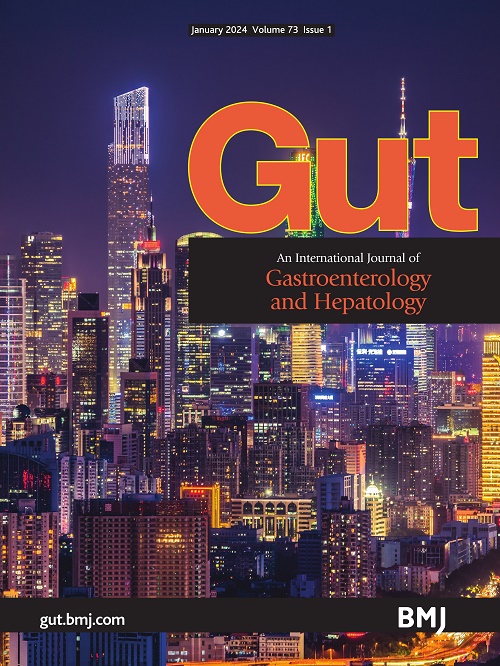Establishment of enterically transmitted hepatitis virus animal models using lipid nanoparticle-based full-length viral genome RNA delivery system
IF 23
1区 医学
Q1 GASTROENTEROLOGY & HEPATOLOGY
引用次数: 0
Abstract
Background Enterically transmitted hepatitis viruses, such as hepatitis A virus (HAV) and hepatitis E virus (HEV), remain notable threats to public health. However, stable and reliable animal models of HAV and HEV infection are lacking. Objective This study aimed to establish HAV and HEV infections in multiple small animals by intravenously injecting lipid nanoparticle (LNP)-encapsulated full-length viral RNAs (LNP-vRNA). Design In vitro transcribed and capped full-length HAV RNA was encapsulated into LNP and was intravenously inoculated to Ifnar −/− mice, and HEV RNA to rabbits and gerbils. Virological parameters were determined by RT-qPCR, ELISA and immunohistochemistry. Liver histopathological changes were analysed by H&E staining. Antiviral drug and vaccine efficacy were further evaluated by using the LNP-vRNA-based animal model. Results On intravenous injection of LNP-vRNA, stable viral shedding was detected in the faeces and infectious HAV or HEV was recovered from the livers of the inoculated animals. Liver damage was observed in LNP-vRNA (HAV)-injected mice and LNP-vRNA (HEV)-injected rabbits. Mongolian gerbils were also susceptible to LNP-vRNA (HEV) injections. Finally, the antiviral countermeasures and in vivo function of HEV genome deletions were validated in the LNP-vRNA-based animal model. Conclusion This stable and standardised LNP-vRNA-based animal model provides a powerful platform to investigate the pathogenesis and evaluate countermeasures for enterically transmitted hepatitis viruses and can be further expanded to other viruses that are not easily cultured in vitro or in vivo. All data relevant to the study are included in the article or uploaded as online supplemental information.利用基于脂质纳米粒子的全长病毒基因组 RNA 运送系统建立肠道传播的肝炎病毒动物模型
背景经肠道传播的肝炎病毒,如甲型肝炎病毒(HAV)和戊型肝炎病毒(HEV),仍然是公共卫生的显著威胁。然而,目前还缺乏稳定可靠的 HAV 和 HEV 感染动物模型。本研究旨在通过静脉注射脂质纳米粒子(LNP)包裹的全长病毒 RNA(LNP-vRNA),在多种小型动物中建立 HAV 和 HEV 感染模型。设计 将体外转录和封端的全长 HAV RNA 封装到 LNP 中,静脉注射给 Ifnar -/- 小鼠,并将 HEV RNA 注射给兔子和沙鼠。病毒学参数通过 RT-qPCR、ELISA 和免疫组化进行测定。肝脏组织病理学变化通过 H&E 染色进行分析。利用基于 LNP-vRNA 的动物模型进一步评估了抗病毒药物和疫苗的疗效。结果 静脉注射 LNP-vRNA 后,在粪便中检测到稳定的病毒脱落,并从接种动物的肝脏中回收了感染性 HAV 或 HEV。在注射 LNP-vRNA(HAV)的小鼠和注射 LNP-vRNA(HEV)的兔子身上观察到肝损伤。蒙古沙鼠对注射 LNP-vRNA(HEV)也很敏感。最后,在基于 LNP-vRNA 的动物模型中验证了 HEV 基因组缺失的抗病毒对策和体内功能。结论 这种稳定和标准化的基于 LNP-vRNA 的动物模型为研究肠道传播的肝炎病毒的发病机制和评估对策提供了一个强大的平台,并可进一步扩展到体外或体内不易培养的其他病毒。与该研究相关的所有数据均包含在文章中或作为在线补充信息上传。
本文章由计算机程序翻译,如有差异,请以英文原文为准。
求助全文
约1分钟内获得全文
求助全文
来源期刊

Gut
医学-胃肠肝病学
CiteScore
45.70
自引率
2.40%
发文量
284
审稿时长
1.5 months
期刊介绍:
Gut is a renowned international journal specializing in gastroenterology and hepatology, known for its high-quality clinical research covering the alimentary tract, liver, biliary tree, and pancreas. It offers authoritative and current coverage across all aspects of gastroenterology and hepatology, featuring articles on emerging disease mechanisms and innovative diagnostic and therapeutic approaches authored by leading experts.
As the flagship journal of BMJ's gastroenterology portfolio, Gut is accompanied by two companion journals: Frontline Gastroenterology, focusing on education and practice-oriented papers, and BMJ Open Gastroenterology for open access original research.
 求助内容:
求助内容: 应助结果提醒方式:
应助结果提醒方式:


